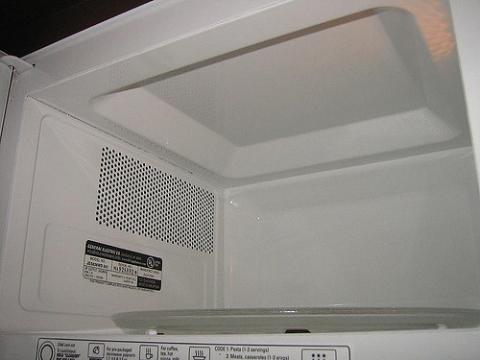
When it comes to cooking, everybody likes to save time. For the convenience they provide, what could be better than a microwave? All you have to do is pop in your leftovers or your frozen meal, hit some buttons, and wait a few minutes. When it comes out, you’re ready to eat! Still, be warned, as not everything is microwavable.
1. Eggs: A couple things here: don’t eggs cook fast enough? If your answer is no, then please remember that trying to cook a whole egg in a microwave is not going to end well for you. It’s basically like lighting the wick on a runny yolk bomb that you will then have to clean up in about 30 seconds.
These eggs-plosions are caused because the steam created inside the shell makes the inside heat up too quickly. With nowhere for the steam to escape, the shell explodes. On the other hand, you can make scrambled eggs in a microwave if you take it out of the shell and nuke it for about 45 seconds.
2. Paper bags: Paper bags can release toxins that can potentially catch fire. There’s also the chance that any ink printed on the paper could release itself into your food—and nobody needs those problems. Paper plates, on the other hand, are generally pretty safe.
3. Take-out containers: If the container has any metal, don’t put it in the microwave! Metal can easily catch fire in the microwave — and cause serious damage.
4. Yogurt & butter containers: Plastic containers like yogurt cups and butter containers are meant for one-time use. They aren’t made to withstand the high temperatures and heat of a microwave, and if heated they can melt and potentially release chemicals into the food.
5. Styrofoam: This is one of those things people like to test — thinking, ‘if I just put it in for a few seconds, it’ll be fine…’ Nope, don’t do it! Styrofoam cups, bowls, take-out containers — whatever the type, don’t put it in the microwave. Styrofoam is a type of plastic, which doesn’t mix well with microwave temperatures. Some possible side effects could be styrene gas which is known to cause cancer, chemicals leeching into your food and problems with your endocrine system.
If you like your hormones balanced, take the extra time to put your food in a safe container before microwaving it!
6. Grapes: They will explode and could catch on fire.
7. You may have plates or bowls with a pretty metal trim — and when it comes to whether you should put them in the microwave, remember the word metal. That’s a red flag for do not put in microwave!
8. Sauce or dip without a cover: Talk about a mess… Putting any type of sauce or dip in the microwave without a cover (even just a paper towel) will just end up leaving a HUGE mess.
9. Plastic storage containers: Again, the keyword being plastic — meaning, do not put in the microwave! Certain Tupperware-type plastic containers will have a label if they are microwave safe. If you don’t see that label, check the manufacturer’s website — or to be on the safe side, just don’t microwave it.
10. Hot peppers: First, they can catch fire. Second, when you open the microwave, the heat can cause the peppers to release chemicals that can burn your eyes — which sounds great to absolutely no one. Though you’re probably ok if you have some leftovers with sliced up peppers in them, microwaving a whole pepper is a bad idea.
11. Stainless steel travel mugs/bottles: Many people microwave travel mugs not realizing they’re made of stainless steel — which does not belong in the microwave. The stainless steel will not only block the heat from warming whatever’s in your mug, but nuking it can also damage your microwave. If the mug is plastic, check the bottom for a label to see if it’s marked as microwave safe.
12. Frozen meat: Frozen meat is tricky to microwave, because depending on how thick it is, it’s difficult to make sure the inside is fully cooked. Plus, if the heat isn’t evenly distributed, bacteria can grow and spread on the food. So if you need to defrost meat that was in the freezer, just leave it in the fridge overnight.
13. Aluminum foil: It’s metal. So if your leftovers — or anything else you want to heat up in the microwave — has aluminum foil over it, take the foil off before putting it in! The aluminum foil can catch fire.
14. When there’s nothing in the microwave to absorb the microwaves, the microwave can actually catch fire — and at the very least, turning it on with nothing in there can damage the microwave.
15. Be careful with ‘microwave safe’ labels: If something has a ‘microwave safe’ label, that often means you can microwave it without damaging the product or your microwave. That doesn’t mean the product can’t get extremely hot and become unsafe for you to touch after it’s been in the microwave.
If you aren’t sure about how a certain bowl or other container will work in the microwave, heat the liquid or food in something else and then transfer it to that container.